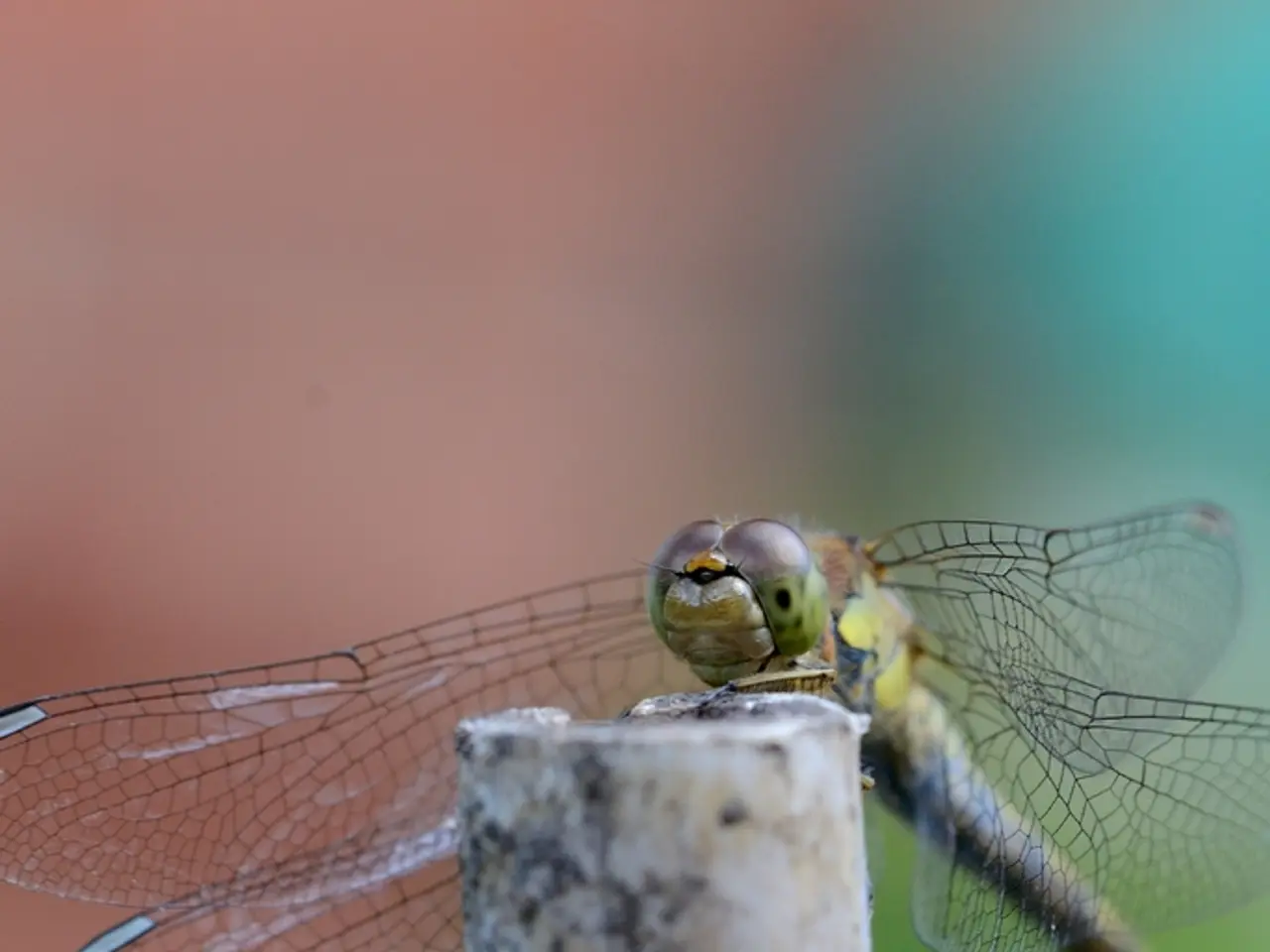Dragonfly environmental factors and vibrant hues
In an intriguing finding, a study conducted by researchers at the Living Earth Collaborative, Washington University in St. Louis, MO, has discovered that male dragonflies may adapt to climate change by reducing their melanin-rich wing areas. The study's findings, published in the journal Proceedings of the National Academy of Sciences, suggest that this adaptation is a consequence of rising global temperatures.
The study, led by Michael P. Moore and colleagues, focused on melanin wing ornaments and habitat climates for 319 dragonfly species across North America. According to the research, during warm years between 2005 and 2019, male dragonflies exhibited the smallest melanin wing patches. This trend is projected to continue, with climate-warming projections suggesting that male dragonflies will likely evolve even smaller melanin wing patches by 2070.
Interestingly, the study found no significant impact of climate on the wing ornaments of female dragonflies. This indicates that the adaptation to local climates is a mating-related trait specific to male dragonflies.
Ornamental patches of melanin on dragonfly wings can increase body temperatures by more than 2 °C above ambient temperatures. In cool climates, this rise can benefit dragonflies by warming their bodies, but in warm climates, it may damage wing tissues, reduce fighting abilities, or even prove lethal.
Male dragonflies in the coolest parts of North America have evolved larger and darker melanin wing patches than those in the warmest regions of the continent. This adaptation seems to be a response to the cooler climates, where the increased body temperature can be beneficial. However, as global warming intensifies, these larger melanin patches may become a liability, leading to the evolution of smaller wing patches.
The study's findings provide valuable insights into the ways in which wildlife may adapt to climate change. As climate-warming projections continue to suggest increased temperatures, understanding these adaptations can help us predict and mitigate potential impacts on various species.
In conclusion, the study by Michael Moore and colleagues examines the relationship between ornamentation and climate adaptation in dragonflies, offering a fascinating glimpse into the complex ways in which species may respond to changing environmental conditions. As we continue to grapple with the challenges of climate change, studies such as this one are crucial in helping us understand and prepare for the future.
Read also:
- Understanding Hemorrhagic Gastroenteritis: Key Facts
- Stopping Osteoporosis Treatment: Timeline Considerations
- Tobacco industry's suggested changes on a legislative modification are disregarded by health journalists
- Expanded Community Health Involvement by CK Birla Hospitals, Jaipur, Maintained Through Consistent Outreach Programs Across Rajasthan








